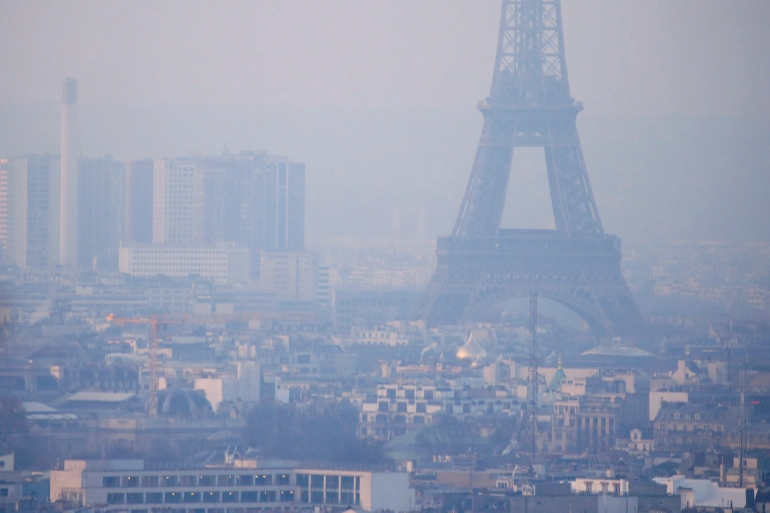
The Eiffel Tower is surrounded by a small-particle haze which hangs above the skyline in Paris [File: Gonzalo Fuentes/Reuters]
Geneva, September 22 (RHC)-- The World Health Organization (WHO) has strengthened its air quality guidelines, or AQGs, as it warned that air pollution was one of the biggest environmental threats to human health, causing seven million premature deaths a year.
The United Nations health agency said on Wednesday that urgent action was needed to reduce exposure to air pollution, ranking its burden of disease “on a par with other major global health risks such as unhealthy diet and tobacco smoking.”
“WHO has adjusted almost all the air quality guideline levels downwards, warning that exceeding the new … levels is associated with significant risks to health,” it said. “Adhering to them could save millions of lives.”
The new guidelines aim to protect people from the adverse effects of air pollution and are used by governments as a reference for legally binding standards. The WHO last issued AQGs in 2005, which had a significant impact on pollution abatement policies worldwide.
However, the WHO said in the 16 years since, a much stronger body of evidence had emerged, showing how air pollution affects health at lower concentrations than previously understood.
“The accumulated evidence is sufficient to justify actions to reduce population exposure to key air pollutants, not only in particular countries or regions but on a global scale,” the organization said.
The WHO’s new guidelines include recommendations for air quality levels for six pollutants, including ozone, nitrogen dioxide, sulphur dioxide and carbon monoxide. The other two are PM10 and PM2.5 – particulate matter equal or smaller than 10 and 2.5 microns in diameter.
Both are capable of penetrating deep into the lungs but research shows PM2.5 can even enter the bloodstream, primarily resulting in cardiovascular and respiratory problems, but also affecting other organs, said the WHO. In response, the PM2.5 guideline level has been halved.
In 2019, more than 90 percent of the world’s population lived in areas where concentrations exceeded the 2005 AQG for long-term PM2.5 exposure. Southeast Asia is the worst-affected region.
The new guidelines come just weeks before the COP26 global climate summit held in Scotland’s Glasgow from October 31 to November 12. The WHO said that alongside climate change, air pollution was one of the major environmental threats to human health. Improving air quality would enhance climate change mitigation efforts, and vice versa, it added.
“Air pollution is a threat to health in all countries, but it hits people in low- and middle-income countries the hardest,” said WHO chief Tedros Adhanom Ghebreyesus.
The WHO said that while air quality had markedly improved since the 1990s in high-income countries, the global toll in deaths and lost years of healthy life had barely declined, as air quality had generally deteriorated in most other countries, in line with their economic development.
“Every year, exposure to air pollution is estimated to cause seven million premature deaths and result in the loss of millions more healthy years of life,” the WHO said. In children, this could include reduced lung growth and function, respiratory infections and aggravated asthma.
In adults, ischaemic heart disease – also called coronary heart disease – and stroke are the most common causes of premature death attributable to outdoor air pollution.
Evidence is also emerging of other effects such as diabetes and neurodegenerative conditions, the organisation said.

